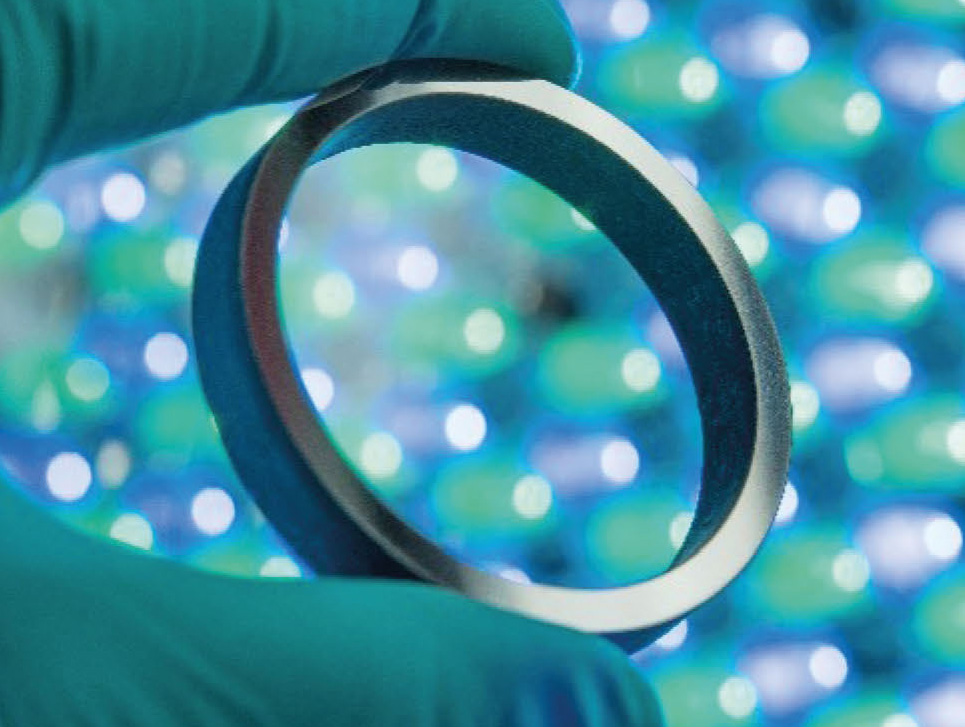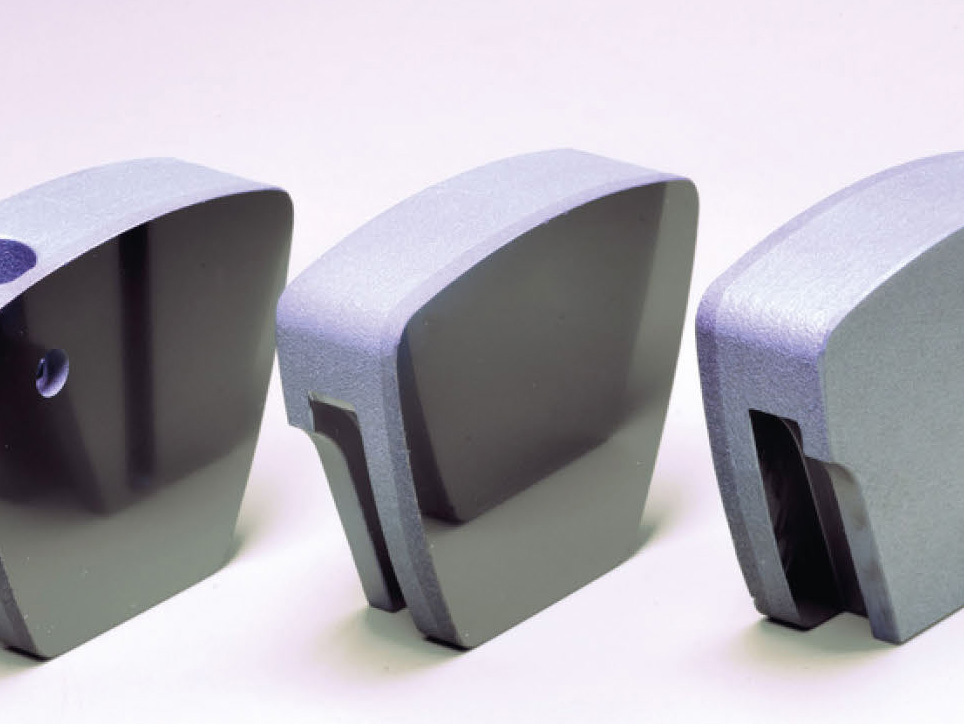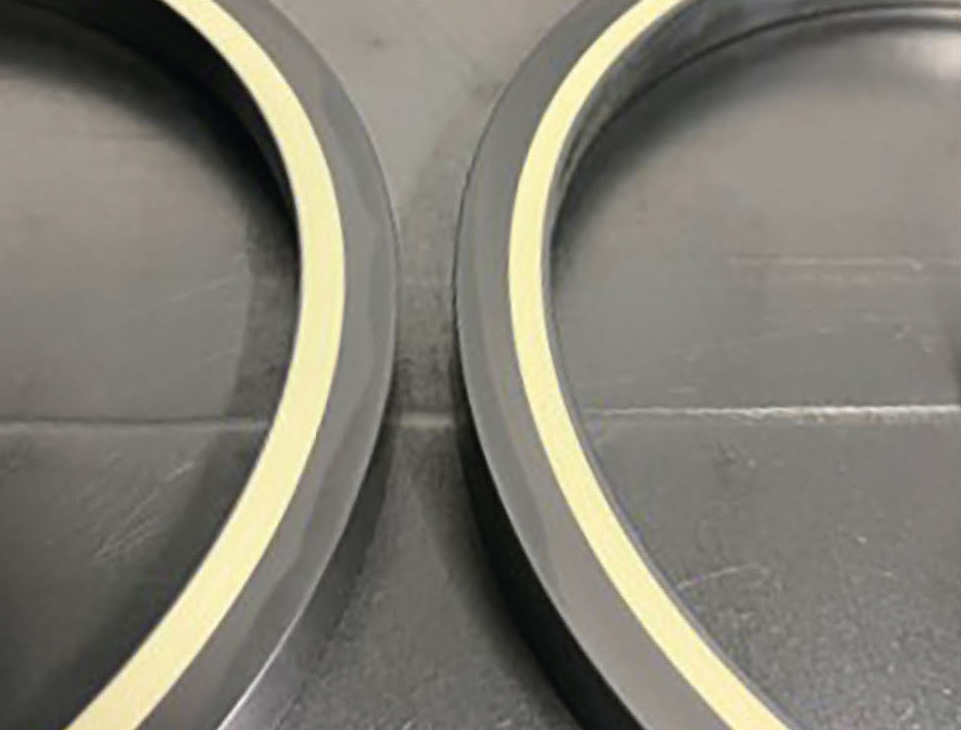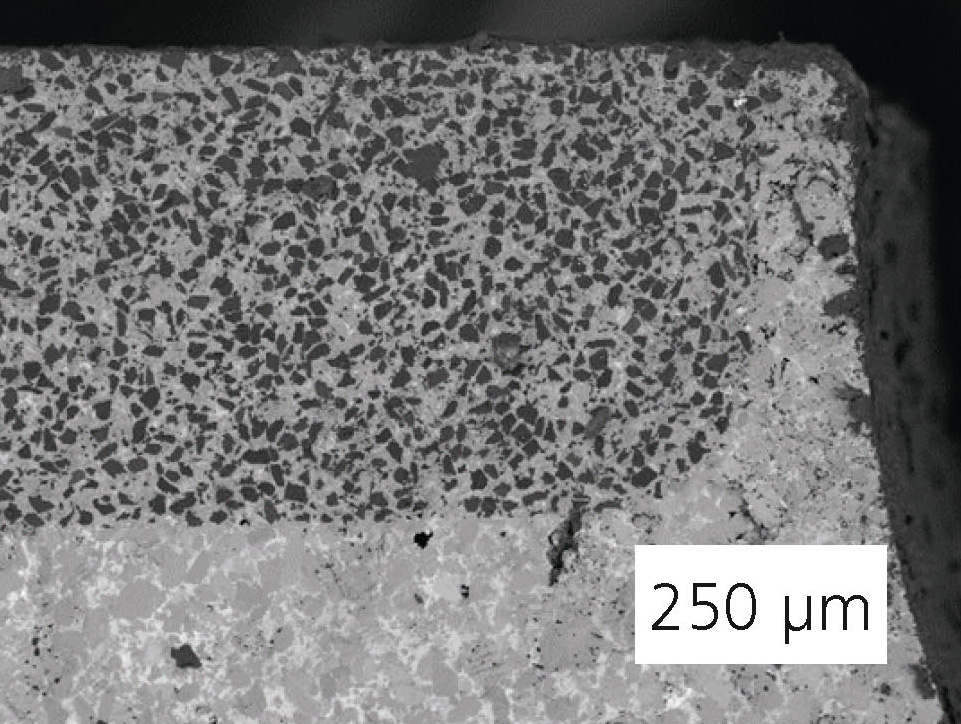
Diamond-SiC composites for highly exposed bearings and seals
Current research




Materials used in pumps are exposed to demanding industrial conditions. The media to be pumped are often corrosive and can also contain abrasive particles. This requires materials that can withstand high mechanical loads and meet these tribological-chemical system requirements.
Fraunhofer IKTS develops diamond-silicon carbide composites for this type of application. Thanks to the high hardness of the diamond phase and the excellent chemical resistance of diamond and silicon carbide, these materials are ideally suited for use under harsh conditions, e.g., in pump bearings and seals. The composite material is used in particular where maintenance is extremely complex and very long service lives are required, as is the case in the subsea sector and the chemical industry.
Material concept
Diamond-SiC composites are very expensive to machine due to their excellent wear resistance. One focus of research at Fraunhofer IKTS is therefore the development of component concepts that allow to produce complex components from diamond-SiC at low costs. One way of doing this is to use a grading process to produce the diamond composite only in the highly stressed functional surfaces of conventional SiC components. This can be achieved by double pressing. In this process, a diamond granulate is pressed onto a pre-compacted SiSiC granulate. It is also possible to coat the surfaces of already siliconized or sintered carbide ceramics using slurry technology. The diamond zones produced in this way can be easily processed d before liquid phase siliconizing. After the firing process, the diamond-SiC composite formed has a hardness of up to 48 GPa (HK2). The carbide base materials, on the other hand, can be machined after the firing process using established methods. In this way, the component dimensions required for the function can be implemented with high precision.
Diamond contents of approx. 50 % by volume can be applied to the functional surfaces using the press or slurry process. The low silicon content of below 5 % by volume guarantees high corrosion resistance even in alkaline media and under hydrothermal conditions. Tribological tests show that the SiC-bonded diamond materials exhibit wear behavior similar to that of extremely hard polycrystalline diamonds (PCD). In the project “SubSeaSlide”, funded by the German Federal Ministry of Education and Research (BMBF), bearings and seals with the diamond-SiC composite were supplied to the companies EagleBurgmann Germany GmbH & Co. KG, Miba Industrial Bearings GmbH and Sulzer AG. The industrial tests and applications show promising results and prove the high potential of this material class.
Services and cooperation offered
- Development of functionally optimized diamond composites
- Application-oriented testing of thermal, chemical and tribological material characteristics
- Process development up to pilot component production level
The project partners thank the BMBF for its financial support in the joint project “SubSeaSlide” (FKZ: 03SX508F).
Supported by




